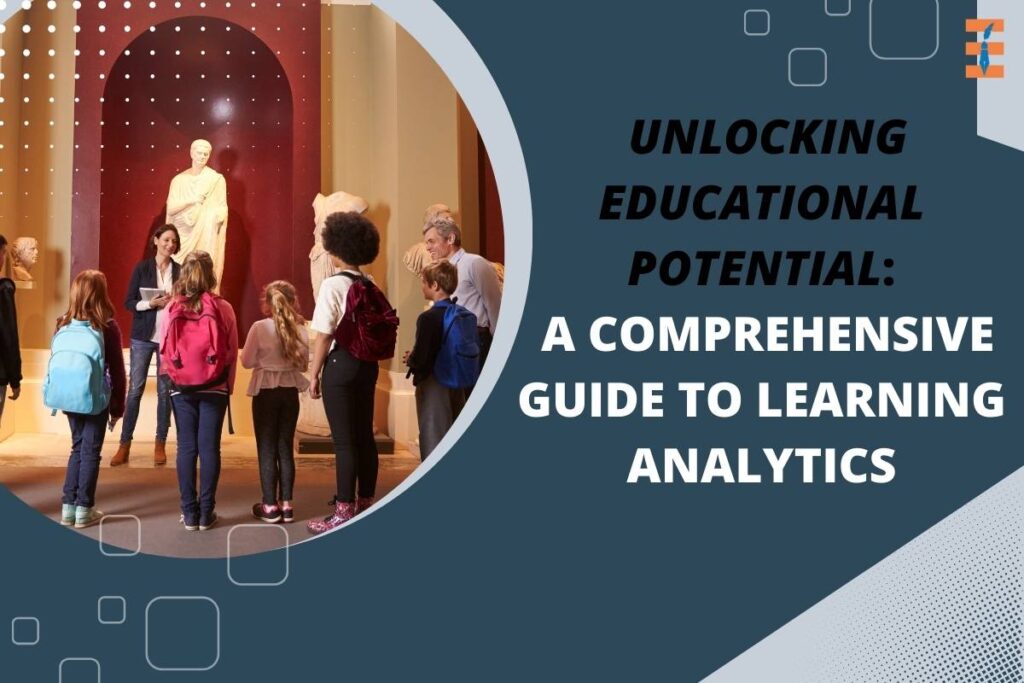In the rapidly evolving landscape of education, the integration of technology has become paramount. One of the revolutionary advancements is learning analytics, a powerful tool that harnesses data to enhance the learning experience. In this article, we delve into the world of learning analytics, exploring its definition, applications, benefits, and the potential challenges it poses.
Defining Learning Analytics:
Learning Analytics refers to the measurement, collection, analysis, and reporting of data about learners and their contexts for understanding and optimizing learning and the environments in which it occurs. It involves the use of various technologies and methods to gather and interpret data related to student performance, engagement, and other aspects of the learning process.
Applications of Learning Analytics:
1. Early Intervention Systems
Learning analytics enables the identification of students who may be at risk of falling behind. By analyzing data on attendance, assessment scores, and engagement, educators can implement early intervention strategies to provide timely support and guidance to struggling students.
2. Personalized Learning

One of the significant advantages of this is its ability to tailor educational experiences to individual learners. Analyzing data on learning preferences, progress, and performance allows for the creation of personalized learning paths, ensuring that each student receives content and support suited to their unique needs.
3. Curriculum Enhancement
Institutions can use learning analytics to evaluate the effectiveness of their curriculum. By analyzing data on student performance, educators can identify areas where the curriculum may need improvement or modification to better align with the learning objectives.
4. Predictive Modeling
It utilizes predictive modeling to forecast future student performance. By examining patterns and trends in historical data, educators can make informed predictions about potential challenges students may face and take proactive measures to address them.
Benefits of Learning Analytics:
1. Improved Student Outcomes
One of the primary benefits of this is its potential to enhance overall student outcomes. By identifying and addressing learning gaps early on, educators can support students in achieving their academic goals more effectively.
2. Enhanced Teaching Strategies

Learning analytics empowers educators with valuable insights into teaching strategies that resonate most with their students. This data-driven approach allows for the refinement of instructional methods, leading to more engaging and effective teaching practices.
Also Read: 21st Century Teaching Methods Transforming Education
3. Resource Optimization
Institutions can optimize resource allocation based on it. By understanding which programs, courses, or interventions yield the best results, educational institutions can allocate resources more efficiently, ensuring maximum impact.
4. Data-Informed Decision-Making
Learning analytics provides decision-makers with the data needed to make informed choices about curriculum design, resource allocation, and overall educational strategies. This shift towards data-informed decision-making fosters a culture of continuous improvement within educational institutions.
Challenges and Considerations:
1. Data Privacy and Security
The collection and storage of sensitive student data raise concerns about privacy and security. Educational institutions must implement robust measures to safeguard this information and ensure compliance with relevant data protection regulations.
2. Ethical Use of Data
The ethical use of data in learning analytics is crucial. Educators and institutions must navigate the fine line between leveraging data for improvement and respecting the rights and autonomy of students.
3. Digital Equity

Learning analytics heavily relies on digital technologies, potentially creating disparities in access to educational resources. It is essential to address issues of digital equity to ensure that all students benefit from the advantages of this.
4. Resistance to Change
Implementing it may face resistance from educators or administrators uncomfortable with a data-driven approach. Adequate training and communication are essential to overcoming this resistance and fostering a culture that embraces the potential of learning analytics.
Conclusion
It stands at the forefront of educational innovation, offering a data-driven approach to enhance student outcomes, personalize learning experiences, and optimize educational practices. While the field holds immense promise, it is essential to navigate challenges such as data privacy, ethical considerations, and digital equity. As educational institutions continue to harness the power of learning analytics, they pave the way for a future where every student has the opportunity to unlock their full potential through tailored and effective learning experiences.
Frequently Asked Questions (FAQs):
1. What is learning analytics, and how does it differ from traditional assessment methods?
It involves the measurement, collection, analysis, and reporting of data about learners and their contexts. Unlike traditional assessment methods that often focus on end-of-term exams, it utilizes continuous data gathering to provide real-time insights into student performance, engagement, and learning preferences.
2. How does learning analytics contribute to personalized learning experiences?
It leverages data on individual student performance, preferences, and progress to create personalized learning paths. By tailoring educational content and interventions to each student’s unique needs, enhances the overall learning experience and helps students achieve their academic goals more effectively.
3. What role does predictive modeling play in learning analytics, and how accurate are these predictions?
Predictive modeling involves analyzing historical data to forecast future student performance and identify potential challenges. While predictions are not infallible, they provide educators with valuable insights for early intervention. The accuracy of predictions depends on the quality and relevance of the data used in the modeling process.
4. How can learning analytics address concerns about data privacy and security?
Ensuring data privacy and security in this involves implementing robust measures. Educational institutions must adhere to relevant data protection regulations, encrypt sensitive information, and establish clear policies on data access and sharing. Additionally, transparent communication with students about data usage is crucial to building trust.
5. What challenges might educators face in adopting learning analytics, and how can these be overcome?
Educators may encounter challenges such as resistance to change, ethical concerns, and the need for additional training. Overcoming these challenges requires a concerted effort, including comprehensive training programs, transparent communication about the benefits of this, and the establishment of ethical guidelines for data use. Fostering a culture that values data-informed decision-making is also essential.










